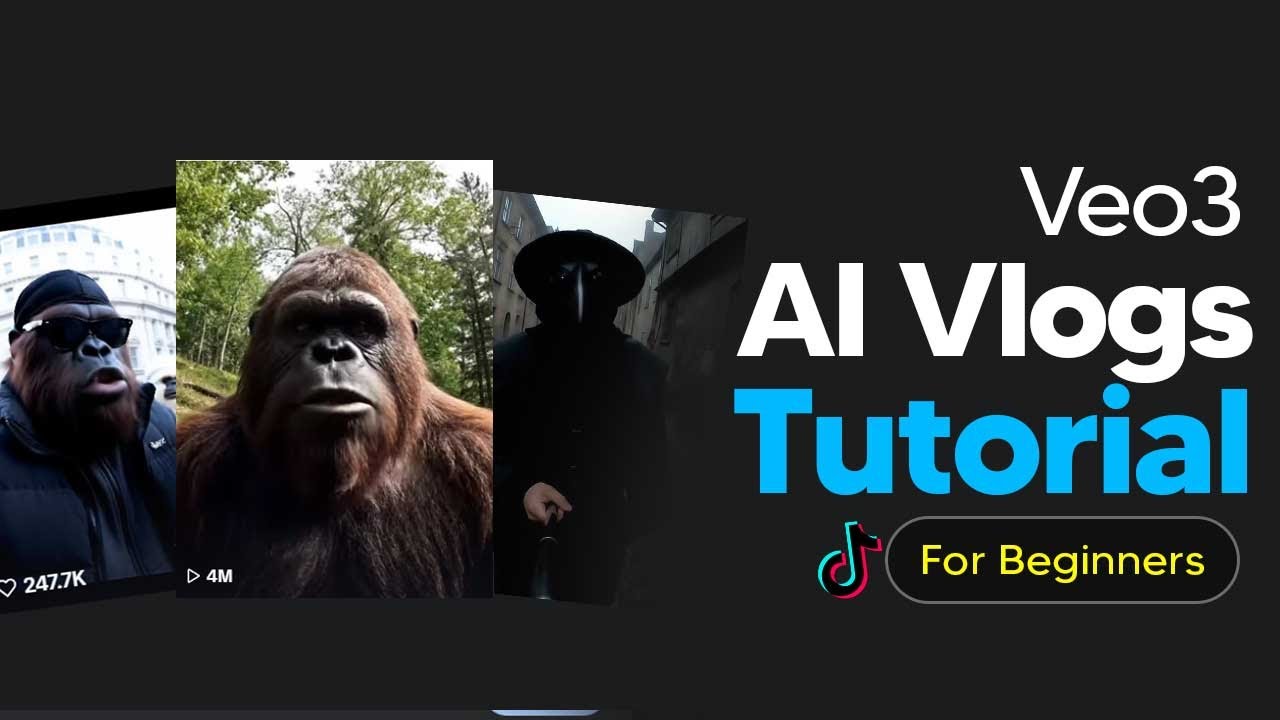The video is a detailed tutorial on creating viral AI-generated vlogs using Google’s Google Flow, emphasizing structured prompts, scene continuity, and character consistency to produce realistic and engaging short videos. It also offers tips on managing multiple characters, optimizing prompts, and utilizing scene assets to craft seamless, high-quality content suitable for platforms like TikTok.
The video provides a comprehensive tutorial on creating viral AI-generated vlogs using Google’s new tool, Google Flow. The creator emphasizes that AI vlogs are currently trending and shares their step-by-step prompting strategy to produce high-quality, realistic clips. They highlight the importance of structuring prompts carefully, focusing on the subject, action, environment, and camera angle to ensure each generated scene is coherent and visually appealing.
A key aspect of the tutorial is the prompt construction. The creator explains that simple, concise prompts work best, with the main components being the character or subject, their actions, the environment, and the desired camera perspective. They stress that minor imperfections in prompts can lead to poor results, so initial testing with cheaper image prompts is recommended to refine the perspective and details before generating final clips. Consistency in prompts helps maintain continuity across scenes, making the videos more seamless and engaging.
The creator demonstrates how to generate multiple scenes and maintain character consistency by saving specific frames as assets. These frames can then be used as starting points for subsequent scenes, allowing for longer, more cohesive videos. They also show how to arrange clips in a scene builder, crop, delete, and sequence them to craft a smooth narrative. This process enables the creation of extended videos with consistent characters and actions, which is crucial for engaging TikTok content and other short-form platforms.
Further, the tutorial covers handling multiple characters and dialogues within scenes. The creator advises explicitly describing each character, their actions, and what they say to avoid confusion and ensure accurate generation. They note that V3 is the most effective version for high-quality results, especially when working with two characters, while three or more characters can cause the model to struggle. The importance of reusing prompts and styles for consistency across multiple scenes is also highlighted, making the process more efficient for creators.
Finally, the creator shares additional tips, such as using scene assets for longer scenes, being cautious with credit consumption, and experimenting with different camera POVs like selfie sticks or handheld views. They emphasize that Google’s V3 AI handles much of the sound effects and breathing naturally, reducing the need for overly detailed prompts. Overall, the tutorial aims to empower creators to produce viral AI vlogs easily by following a structured prompting approach, leveraging scene continuity, and utilizing Google’s tools effectively.
